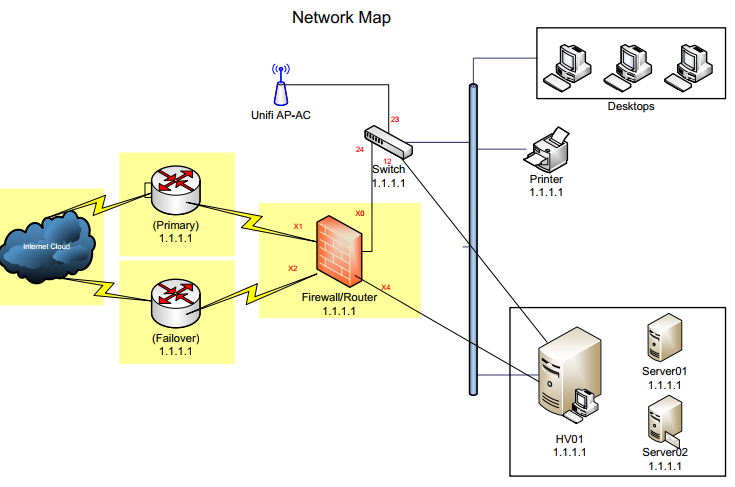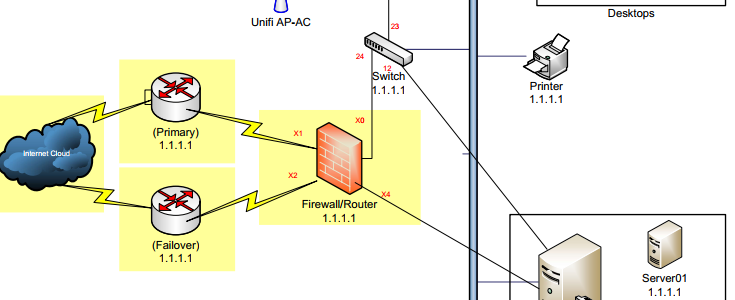

In our last article, The Ping: How Does a Network Work?, we explained that a network “….allows all your devices to communicate and share data/resources with each other, either wirelessly or wired in a secure environment.” A Switch is the core of this environment. Switches allow the computers on your network to talk directly to one another. What if you want your computer to get to the internet or another network? You need a router for this. A router “routes” data from within your network to and from outside networks like the internet. If you’ve never heard of a router you’re not alone. Most small to medium sized businesses do not use plain old routers any more. Instead they use the routers more sophisticated cousin, the Firewall, to do the same job.

A firewall does the same job as a router plus it captures every piece of information, or packet, that you download from or send to the internet, breaks it down, and analyzes it to make sure it’s safe and allowed on your network. Since a firewall is in charge of keeping your network safe, it is normally found where your network connects to an untrusted network like the internet. Firewalls can either come in software or hardware form.
Software firewalls are usually found on servers and workstations. They are great at keeping key systems safe, but they are not very good at protecting entire networks. If you want to protect more than a few systems then you really need a hardware firewall. A hardware firewall is a device whose sole job is to protect you.
Firewalls decide what is safe or allowed based on rules. For the most part, all traffic that is destined to another untrusted network is allowed because the firewall innately trusts itself and the systems it is protecting. Inbound traffic is an entirely different story. Hackers will try every way known to get to your data. Its therefor critical to deny all inbound traffic that is unnecessary and only allow the things that you really need like inbound email from other companies and VPN connections so that your employees can work from home.
If you’ve had a hardware firewall in place for more than three years it may be time to swap it out. A firewall can get very busy and can even slow down your web surfing as it gets older so its always important to keep it up to date and fully patched. If you’re looking to upgrade your internet bandwidth then you probably need upgrade your firewall too.
Did you know that every device on your network sends out hundreds of messages every second? As the number of devices on your network increases two things happen: Your network will get so chatty with all your systems talking at the same time that your network will slow down, and your network switches and firewall will not be able to handle all the systems talking on the same network at the same time. Picture 100 people in the same room all talking at the same time. That is your network. Now imagine moving 10 of those people that need to talk to each other into a different room. Communication happens faster because everyone can hear each other.
The network equivalent of moving your systems that need to talk to each other into a different room is called a VLAN. Putting VLANs, or Virtual Local Area Networks, in place keep traffic isolated. VLANs help to speed up network traffic by “partition[ing] the network into logical segments, which provides better administration, security, and management of multicast traffic,” – Netgear.
Do you know how your server works? What is an access point? If you thought this was it, stayed tuned for more about your network. Still have questions? Let us know!
Your UniVista Team
*Celebrating 20 Years of Customer Satisfaction*

